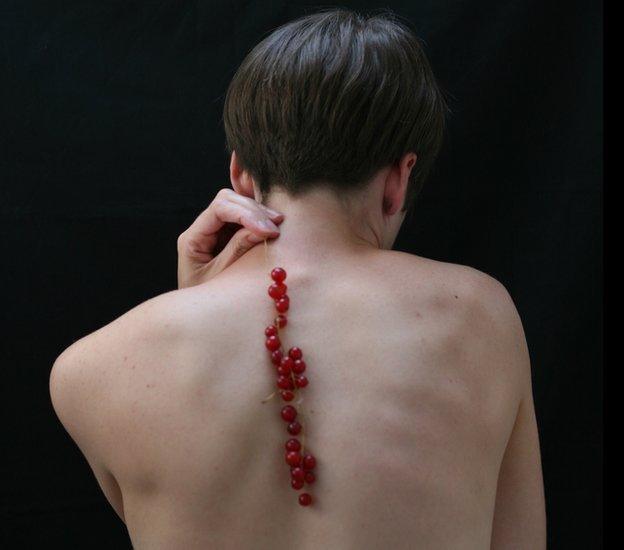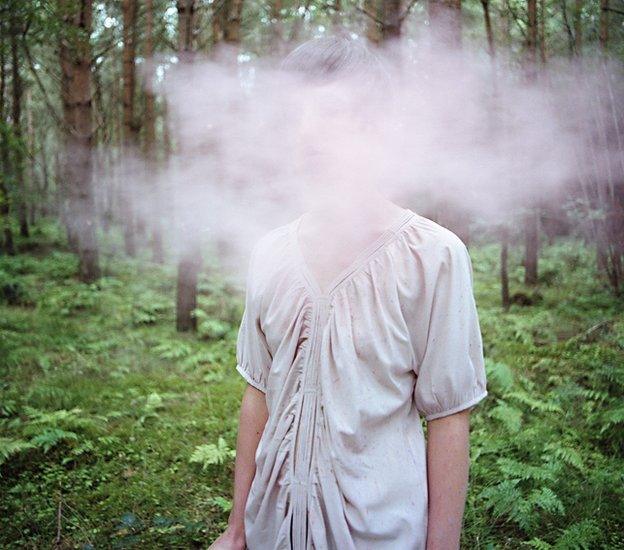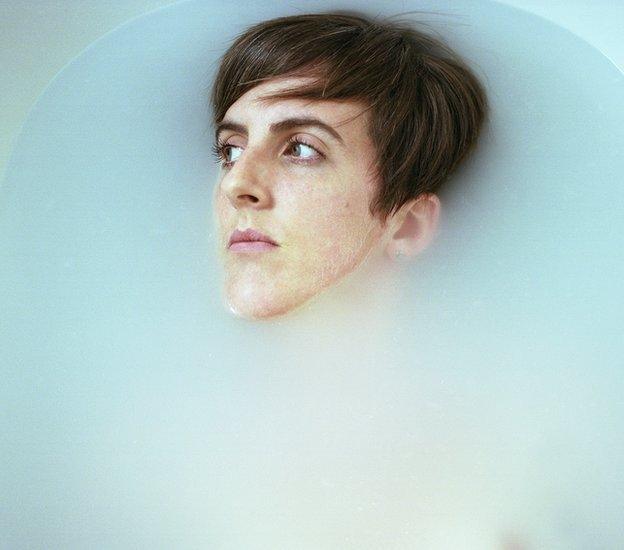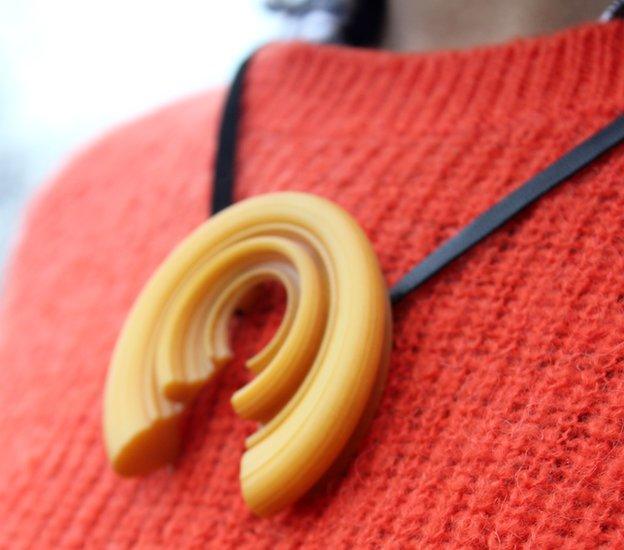In pictures: 'What multiple sclerosis means to me'
- Published

Three young artists convey their experiences of multiple sclerosis in the hope of helping others with their diagnoses.
To find something good out of something bad was the brief given to three young people. They all have multiple sclerosis (MS) and have been creating artistic works that examine how it has affected them in positive ways.
The final pieces - a combination of portraits, photographs and jewellery - are part of a project being run by multiple sclerosis charity Shift MS, external.
They show, they say, that "no two people have the same experience of MS".
Perceiving identity
Photographer Hannah Laycock is 32 and works in London. She was diagnosed with MS in 2013 after showing symptoms since February of the same year. Her initial fear was that she had motor neurone disease, which her father has had since 2009. Instead it was confirmed that she had MS.


"I see my experience of the diagnosis as serendipitist in some ways," she says. "I'm fortunate enough not to have MND, and fortunate enough to have learnt a lot from my dad and his diagnosis, which has given me strength of mind, body and soul."
Laycock initially experienced a creative lull after her diagnosis, but says this particular project has inspired her to do some self-reflection and return to artistic work.
Her pieces are a photographic journey exploring her feelings of uncertainty, fear, loss and liberation.
"Neurology's favourite word is 'deficit'," she says. "Loss of speech, loss of language, loss of memory, loss of vision, loss of dexterity, loss of identity."
In her collection she aims to question the notion of this neurological "loss".


Filling in the Gaps
Bryony Birkbeck was diagnosed with MS when she was 20. She is a multidisciplinary designer and university lecturer in graphic design from Norfolk.
Since her diagnosis, the 31-year-old has been losing her sight due to the related condition optic neuritis.
"At the time I developed optic neuritis I was working on projects which relied heavily on my sight and was about to embark upon a two-year trip abroad," she says. "I was terrified. The thought of entering the unknown without being able to rely on visual information was unimaginable."
But as her sight deteriorated she began to use her imagination to fill in the gaps and often makes up lost information based on sounds, smells and the textures around her. "It's a sort of alternative reality that still has the foundations of my past experience and knowledge but is peppered with images from inside my head," she says.
"The physical photographs I have look dull in comparison to my own 'memory photographs'."

Lesion jewellery
Kirsty Stevens was diagnosed with Multiple Sclerosis in 2007, while studying for a jewellery and metal design degree in Dundee.
Once she had come to terms with the fact that she has MS, she quickly realised that fearing the worst wasn't making anything easier, and decided to use her diagnosis in a positive way.

She is a visual artist who is inspired by her MS. Using her own MRI scans, taken during the lead-up to her diagnosis in 2007, the 29-year-old focuses on the damaging lesion shapes that are visible on the scans to create delicate jewellery patterns. She says this turns the "ugly and negative into something unrecognisably positive".
By making jewellery for this project, Stevens has realised how empowering her diagnosis has been and how proud she is to be part of the "MS army".
The #GOOB project is being organised by Shift MS. More information can be found here., external
Follow @BBCOuch, external on Twitter and on Facebook, external, and listen to our monthly talk show